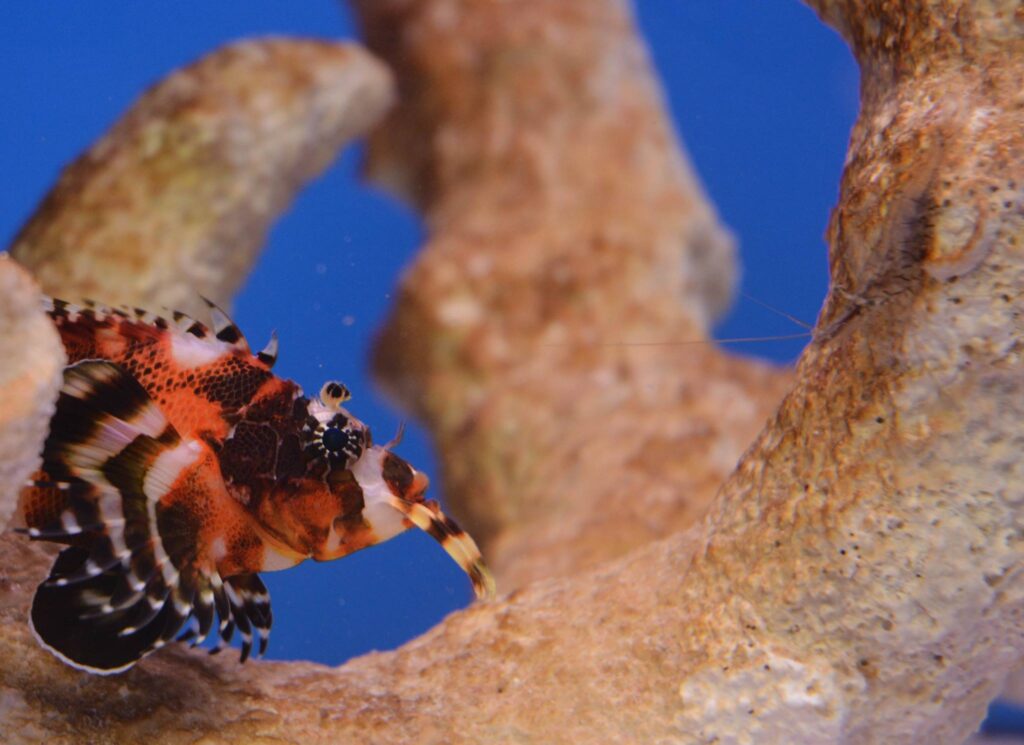Archives
Fu Manchu lionfish
(Dendrochirus biocellatus)
Dendrochirus biocellatus, commonly known as the Fu Manchu lionfish or the Twospot turkeyfish, is a species of venomous fish belonging to the family Scorpaenidae. Here are some key characteristics and information about Dendrochirus biocellatus:
- Physical Appearance: The Fu Manchu lionfish has a distinctive appearance with an elongated body and large, fan-like pectoral fins. It typically has a creamy to reddish-brown base color with dark brown to black bands running vertically along its body. The head has a unique “Fu Manchu” appearance due to its elongated and feathery appendages protruding from the mouth area, which resemble the traditional mustache of the same name. There are typically two dark spots or ocelli (eye-like markings) on the dorsal fin.
- Size: They typically grow to a maximum length of about 15-20 centimeters (6-8 inches).
- Distribution: Dendrochirus biocellatus is found in the tropical Indo-Pacific region. Its range includes regions such as the Red Sea, eastern Africa, Madagascar, Seychelles, Maldives, and extending eastward to the islands of the western Pacific Ocean, including Indonesia, Philippines, and northern Australia.
- Habitat: Fu Manchu lionfish inhabit coral reefs, rocky areas, and lagoons with rich coral growth. They are typically found in shallow to moderate depths, often near reef slopes or drop-offs where there is ample hiding places among corals, rocks, and crevices.
- Behavior: These lionfish are nocturnal predators, remaining relatively inactive during the day and becoming more active at night. They feed primarily on small fish, crustaceans, and other invertebrates that they ambush using their venomous spines.
- Venom: Like all lionfish species, Fu Manchu lionfish have venomous spines on their dorsal, pelvic, and anal fins. These venomous spines are used for defense and are capable of delivering a painful sting if handled improperly.

